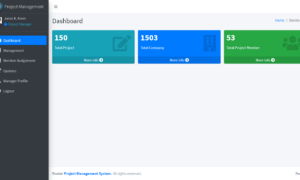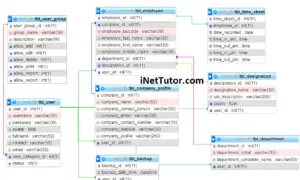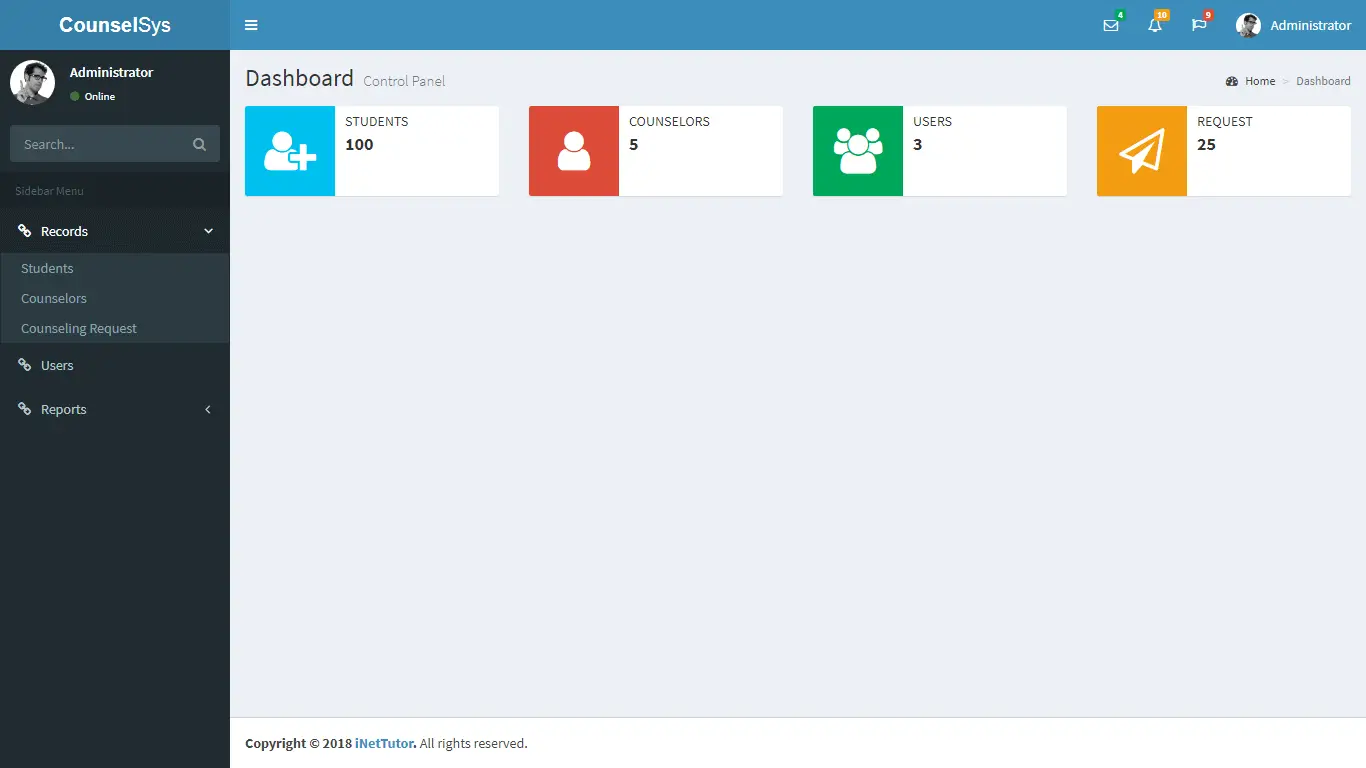Capstone Project Topics with QR Code
In the realm of technology and innovation, QR codes have emerged as a versatile and powerful tool that transcends traditional boundaries. From tracking inventory to simplifying attendance systems, QR codes have revolutionized how we interact with information. If you’re a student or a researcher seeking an exciting and cutting-edge capstone project topic, look no further than QR code integration. This blog post delves into the world of capstone projects with QR code integration, presenting a plethora of intriguing and forward-thinking ideas. From livestock breed identification to digital vaccine certifications and beyond, these projects demonstrate the limitless possibilities of QR code technology. Join us as we explore the benefits, challenges, and considerations of incorporating QR codes into capstone projects. Discover how QR codes can enhance information accessibility, streamline data management, and engage users in innovative ways. Whether you’re an aspiring developer, a tech enthusiast, or a curious mind, this blog post will provide valuable insights and inspiration for your journey into the exciting realm of capstone projects with QR code integration. Prepare to unlock the potential of QR codes and embark on a captivating journey of innovation and discovery.
What is a Capstone Project?
Table of Contents
A Capstone Project is a comprehensive and culminating academic project that students undertake in their final year of study. It is designed to integrate the knowledge, skills, and experiences gained throughout their academic journey into a meaningful and practical application. Capstone Projects can take various forms, such as research papers, experiments, design projects, or software development.
The importance of Capstone Projects lies in their ability to provide students with an opportunity to showcase their mastery of the subject matter and demonstrate their ability to apply theoretical knowledge to real-world situations. They serve as a bridge between academic learning and practical implementation, allowing students to put their skills and understanding into practice.
Capstone Projects offer several key benefits to students. First, they encourage critical thinking, problem-solving, and independent research skills, as students are required to identify a problem or question, analyze it, and propose viable solutions or answers. This fosters creativity, innovation, and the ability to think critically and analytically.
Furthermore, Capstone Projects promote interdisciplinary learning by requiring students to draw upon knowledge from various disciplines and integrate them into a cohesive project. This helps students develop a broader understanding of complex issues and the interconnectedness of different fields.
Capstone Projects also enhance students’ communication and presentation skills, as they are typically required to present their findings, methodologies, and conclusions to a panel of faculty or experts. This experience hones their ability to effectively communicate complex ideas, defend their work, and engage in academic discourse.
Finally, Capstone Projects can serve as a valuable addition to students’ portfolios or resumes, showcasing their expertise, practical skills, and their ability to work on long-term projects independently or as part of a team. This can greatly enhance their job prospects and future academic endeavors.
Capstone Projects in Information Technology
Capstone Projects in Information Technology (IT) are comprehensive and innovative projects undertaken by students as a culmination of their IT studies. These projects allow students to apply their knowledge, skills, and creativity to solve real-world problems or develop new technological solutions. Capstone Projects in IT cover a wide range of topics, including software development, data analysis, cybersecurity, artificial intelligence, networking, and more.
The main purpose of Capstone Projects in IT is to provide students with hands-on experience in applying theoretical concepts and technical skills to practical scenarios. These projects require students to identify a problem or opportunity, conduct research, design and implement a solution, and evaluate its effectiveness. This process helps students develop critical thinking, problem-solving, and project management skills, which are highly valued in the IT industry.
One of the key benefits of Capstone Projects in IT is that they allow students to work on projects that align with their interests and career goals. They have the freedom to choose a project topic that excites them, allowing them to delve deeper into their area of specialization and develop expertise in a specific technology or domain.
Capstone Projects also foster collaboration and teamwork. In many cases, students are encouraged to work in teams, mirroring real-world IT project dynamics. This collaboration enhances communication skills, teaches students to work effectively in a team environment, and exposes them to the challenges and dynamics of collaborative work.
Moreover, Capstone Projects in IT often involve interaction with industry professionals or clients, providing students with valuable networking opportunities and exposure to real-world contexts. This exposure can lead to internships, job offers, or even potential clients for future ventures.
Capstone Projects in IT are instrumental in bridging the gap between academic learning and industry requirements. They empower students to develop practical skills, gain relevant experience, and demonstrate their capabilities to potential employers. Capstone Projects not only contribute to students’ academic growth but also serve as a launching pad for successful careers in the dynamic field of Information Technology.
Overview of QR Code technology
QR code technology is a popular and versatile tool that can be effectively integrated into capstone projects in the field of IT. QR codes, or Quick Response codes, are two-dimensional barcodes that can store various types of information, such as text, URLs, contact details, and more. They can be easily scanned using a smartphone or a QR code reader, providing quick access to the encoded information.
In the context of capstone projects, QR code technology offers numerous possibilities for enhancing user experiences, streamlining processes, and facilitating information exchange. Here are some key areas where QR code integration can be valuable:
- Information Access: QR codes can be used to provide quick access to relevant information. For example, in a library system capstone project, QR codes can be placed on books, allowing users to scan them to access book details, availability, and related resources.
- Authentication and Security: QR codes can be utilized for secure authentication purposes. For instance, in an access control system capstone project, QR codes can be generated as digital tickets or passes, which users can scan to gain entry to restricted areas.
- Inventory and Asset Management: QR codes can be used to track and manage inventory and assets efficiently. In a warehouse management capstone project, QR codes can be placed on items, enabling seamless scanning and updating of inventory records.
- Interactive Experiences: QR codes can enhance interactive experiences by linking physical objects to digital content. For example, in an augmented reality capstone project, QR codes can be integrated into real-world objects to trigger virtual experiences when scanned.
- Marketing and Promotions: QR codes can be utilized for marketing and promotional activities. In an e-commerce capstone project, QR codes can be used to provide product information, discounts, or direct users to online purchase links.
To integrate QR code technology into capstone projects, students can explore various aspects, such as QR code generation, scanning, decoding, and the development of applications or systems that leverage QR code functionality. By leveraging QR code technology, students can create innovative and practical solutions that enhance user engagement, streamline processes, and improve overall efficiency in various IT-related domains.
List of Capstone Project Topics with QR Code
Conceptual Framework of QR Code Based Collar for Livestock Breed Identification: This project explores the use of QR codes on collars to identify different livestock breeds, enabling efficient tracking and management.
- QR Code Based Collar for Livestock Breed Identification: This capstone project focuses on developing a practical solution using QR codes integrated into collars for accurate identification and monitoring of livestock breeds.
- QR Code Based Attendance System Conceptual Framework: This project explores the implementation of a QR code-based attendance system, enhancing efficiency and accuracy in tracking attendance records.
- QR Code Attendance System Use Case Diagram: This project presents a use case diagram illustrating the functionalities and interactions of a QR code-based attendance system, facilitating seamless tracking and recording of attendance.
- QR Code Generator in PHP Free Source code and Tutorial: This project provides a free source code and tutorial for creating a QR code generator using PHP, allowing users to generate QR codes dynamically.
- IPO Model Conceptual Framework of QR Code Fare Payment System: This project presents the conceptual framework for a QR code-based fare payment system, revolutionizing the efficiency and convenience of public transportation.
- QR Code Digital Vaccine Certification Capstone Project: This project focuses on developing a digital vaccine certification system using QR codes, enabling secure and convenient verification of vaccination status.
- QR Code Attendance System with SMS Notification: This capstone project combines QR code-based attendance tracking with SMS notifications, providing real-time updates to users and administrators.
- QR Code Fare Payment System: This project aims to develop a fare payment system utilizing QR codes, simplifying the payment process and improving efficiency in public transportation.
- Preventive Maintenance of Equipment with QR Code: This project explores the integration of QR codes into equipment maintenance processes, enabling quick access to maintenance history and instructions for efficient preventive maintenance.
- OJT Timesheet Monitoring System using QR Code: This capstone project focuses on developing a timesheet monitoring system for On-the-Job Training (OJT) using QR codes, facilitating accurate and automated tracking of OJT hours.
- QR Code Generator in VB.NET Tutorial and Source code: This project provides a tutorial and source code for creating a QR code generator using VB.NET, allowing users to generate QR codes in their applications.
- Online Tracking and Monitoring System of Cargo using QR Code: This project aims to develop an online tracking and monitoring system for cargo using QR codes, enhancing transparency and traceability in logistics operations.
- QR Fare Payment System Use Case Diagram: This project presents a use case diagram illustrating the functionalities and interactions of a QR code-based fare payment system, revolutionizing the payment process in transportation services.
- QR Code-based attendance system: This capstone project focuses on implementing a QR code-based attendance system, enabling quick and efficient attendance tracking in various settings such as schools or workplaces.
- QR Code-enabled library management system: This project aims to enhance the functionality of a library management system by integrating QR codes, facilitating easy book borrowing, return, and inventory management.
- QR Code-driven ticketing and registration system: This project explores the use of QR codes for ticketing and event registration, streamlining the process and enhancing user convenience.
- QR Code-based inventory tracking and management: This capstone project focuses on utilizing QR codes to track and manage inventory, improving efficiency and accuracy in inventory management processes.
- QR Code-powered marketing and promotional campaigns: This project explores the use of QR codes in marketing and promotional campaigns, enabling interactive and engaging experiences for customers.
These capstone project topics showcase the versatility and potential of QR code integration in various applications, addressing real-world challenges and providing innovative solutions.
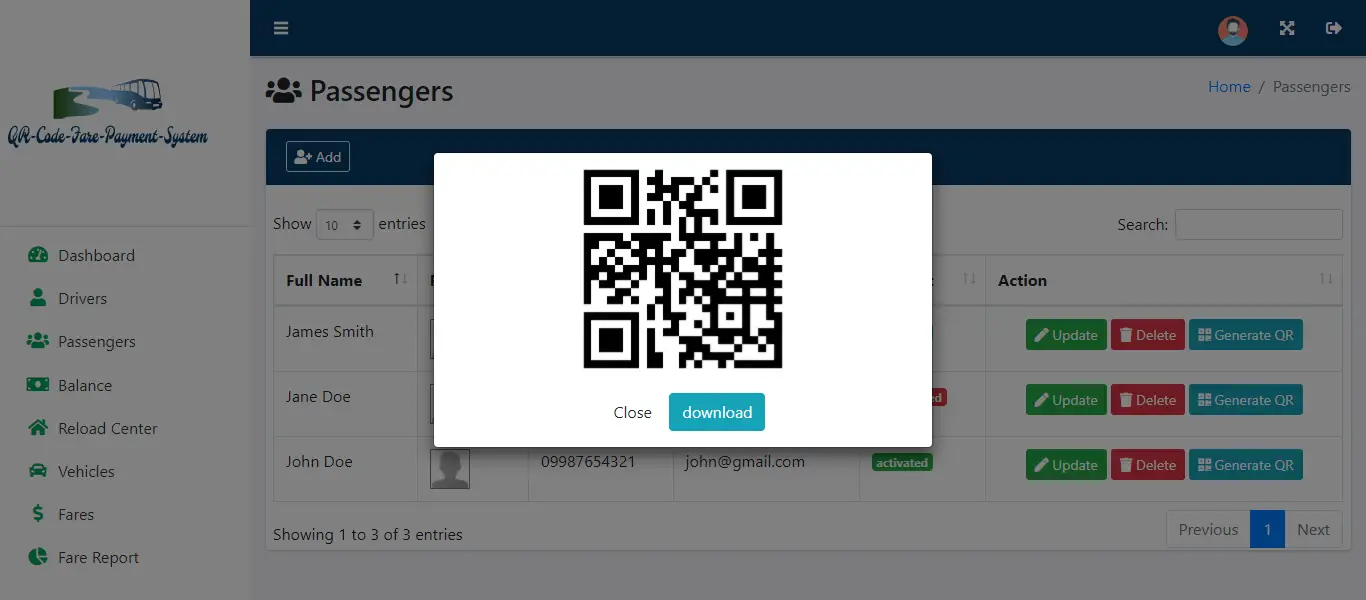
Benefits of QR Code Integration in Capstone Projects
QR code integration in capstone projects offers several benefits that can greatly enhance the effectiveness and functionality of the developed solutions. Here are the key benefits of QR code integration:
- Enhancing Information Accessibility and Efficiency: QR codes provide a quick and convenient way to access information. By integrating QR codes into capstone projects, users can easily retrieve relevant details, such as product information, event schedules, or educational resources, by simply scanning the codes. This improves information accessibility and streamlines the process of retrieving data, saving time and effort.
- Streamlining Data Tracking and Management: QR codes can be used to track and manage data efficiently. For instance, in inventory management or asset tracking capstone projects, QR codes can be assigned to items or assets, allowing for easy scanning and updating of information in real-time. This simplifies data tracking and reduces errors associated with manual data entry.
- Improving User Engagement and Interaction: QR codes provide an interactive and engaging experience for users. By integrating QR codes into capstone projects, users can access additional content, such as videos, websites, or interactive forms, by scanning the codes. This enhances user engagement, encourages participation, and provides a more immersive experience.
- Enabling Seamless Integration with Mobile Devices: QR codes are compatible with smartphones and other mobile devices, making them easily accessible to a wide range of users. With the widespread use of smartphones, integrating QR codes into capstone projects ensures seamless integration and effortless interaction between the project and the users’ devices.
QR code integration in capstone projects enhances information accessibility, streamlines data management, improves user engagement, and enables seamless integration with mobile devices. By leveraging the benefits of QR codes, students can develop innovative solutions that optimize efficiency, enhance user experiences, and address real-world challenges in various domains.
Challenges and Considerations in QR Code Capstone Projects
- When integrating QR codes into capstone projects, there are several challenges and considerations that students need to take into account to ensure the successful implementation and utilization of QR code technology. Here are some key challenges and considerations:
- QR Code Scanning Compatibility: Different smartphones and devices may have varying QR code scanning capabilities. It is important to consider the compatibility of QR code scanning across a range of devices and ensure that the project is accessible to a wide audience.
- QR Code Design and Placement: The design and placement of QR codes play a crucial role in their effectiveness. QR codes should be appropriately sized, clear, and placed in easily visible locations. Consider factors such as contrast, lighting, and distance to ensure optimal scanning experiences.
- Content Management and Updates: QR codes are often used to provide access to dynamic content. Consider how the content behind the QR codes will be managed, updated, and maintained over time. It is important to have a strategy in place for content management and version control to ensure that users always access relevant and up-to-date information.
- Error Correction and Data Integrity: QR codes have built-in error correction capabilities, but it is essential to ensure that the codes are generated and printed correctly to avoid scanning errors. Careful consideration should be given to the size and error correction level of the QR codes to maintain data integrity and minimize scanning issues.
- User Awareness and Education: Users may not be familiar with scanning QR codes or may have concerns about privacy and security. It is important to educate users about the benefits of QR codes, provide clear instructions on how to scan them safely, and address any privacy concerns to build user trust and confidence.
- Testing and Quality Assurance: Thorough testing and quality assurance processes should be implemented to ensure that QR codes function as intended across different devices and scenarios. Testing should include various scanning environments, lighting conditions, and device types to identify and address any potential issues.
- Accessibility Considerations: Accessibility should be a priority when integrating QR codes into capstone projects. Consideration should be given to individuals with visual impairments or other disabilities. Providing alternative accessible formats or additional means of accessing the information behind QR codes can ensure inclusivity.
- By carefully addressing these challenges and considerations, students can overcome potential obstacles and create successful QR code capstone projects that effectively utilize the technology to enhance user experiences, information accessibility, and overall project functionality.
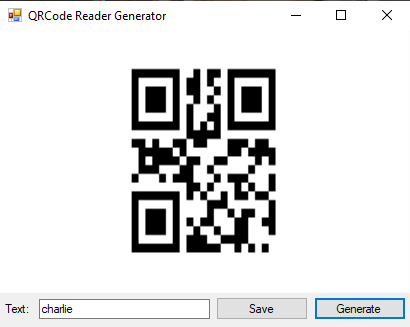
Summary
In today’s digital age, QR codes have emerged as powerful tools for information dissemination, data tracking, and user engagement. This blog post explores a diverse range of capstone project topics that incorporate QR code integration, showcasing the endless possibilities and practical applications of this technology. From livestock breed identification and attendance systems to fare payment and preventive equipment maintenance, these projects demonstrate how QR codes can revolutionize processes and enhance efficiency. Additionally, topics like digital vaccine certification, library management, and cargo tracking delve into the integration of QR codes to streamline operations and improve user experiences. The blog post also highlights QR code generators, tutorials, and source code resources for developers to dive deeper into QR code implementation. With its ability to enhance accessibility, streamline data management, and seamlessly integrate with mobile devices, QR code technology holds immense potential for transforming various industries. This blog post aims to inspire students and researchers to explore and embrace the possibilities of QR code integration in their capstone projects, fostering innovation and paving the way for a more connected and efficient future.
Readers are also interested in:
- 27 Inventory System Capstone Project Ideas
- 35 Best Java Project Ideas with Database
- 35 Interesting Android Java Project Ideas
- 25 Best C# Project Ideas
- Top 35 Capstone Project Ideas with SMS
You may visit our Facebook page for more information, inquiries, and comments. Please subscribe also to our YouTube Channel to receive free capstone projects resources and computer programming tutorials.
Hire our team to do the project
